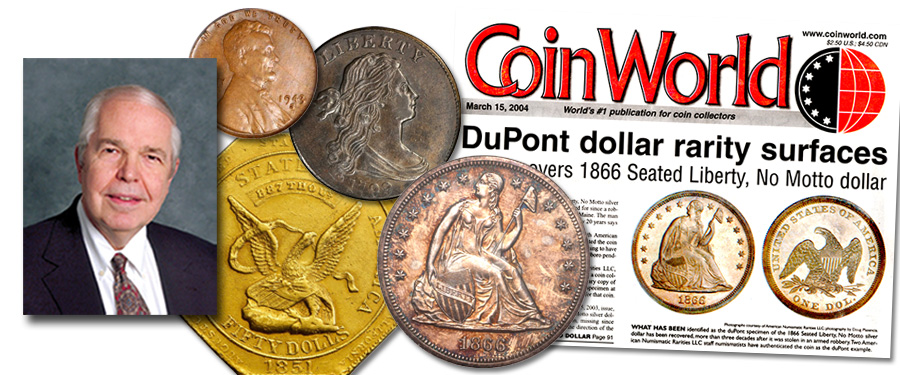
Many coins have significant value based on their fame.
I am not quite sure you could call the 1804 silver dollar (the “King of
American Coins”) popular, only 15 exist, and few people have
the financial wherewithal to buy an example. Certainly, reading about this coin
is a popular pursuit—more ink, including that in two books, is devoted to this
particular variety than to any other single rarity in the U.S. series. However,
the coin itself is not a popular item in the context of widespread acquisition.
Most known examples show signs of wear, and accordingly, grade and scarcity
alone do not determine its price. Its value rests on its fame.
There are many other famous coins in American numismatics,
their fame resting on a combination of historical importance, beauty, market
price, rarity, and press agentry over the years.
If a coin hits the headlines with a value of a million
dollars, the coin will become famous. This was true in 2004 when John Kraljevich
and John Pack located a rare 1866 No Motto Liberty Seated silver dollar, long
missing, in the hands of a non-collector, and returned it to its rightful
owner. This coin, not well known previously (only two are known to exist), was
showcased on television programs, in newspaper articles, and elsewhere. The
ANA, whose museum was the coin’s destination, featured it in publicity. For a time,
it was the talk of the hobby. Had it been for sale (it was not), chances are
good it would have fetched a record price, due to its massive exposure in the
media. In January 2005, the other specimen of this variety,
the only one in private hands was consigned by a Texas estate and was sold by
our firm for $1,207,500.
A list of famous American coins with interesting stories
would be a long one, but for starters, would surely include the 1652
Massachusetts Pine Tree shilling, 1799 copper cent, 1856 Flying Eagle cent,
1943 error cent (struck in copper instead of the steel otherwise used this
year), 1913 Liberty Head nickel, 1792 half dime, and 1851 Augustus Humbert $50
gold “slug.”
As a professional numismatist, I know well that if someone
consigned an 1851 Humbert $50 “slug,” from the height of the California Gold
Rush, it could be sold in a wink to just about anyone who could afford it—no
matter whether they collected gold coins. All it takes is for someone to write
or tell of its romantic history!





